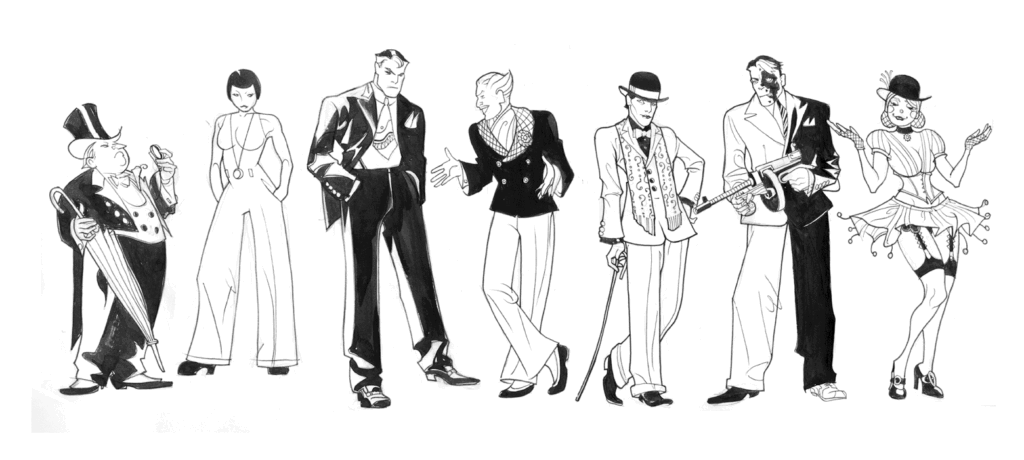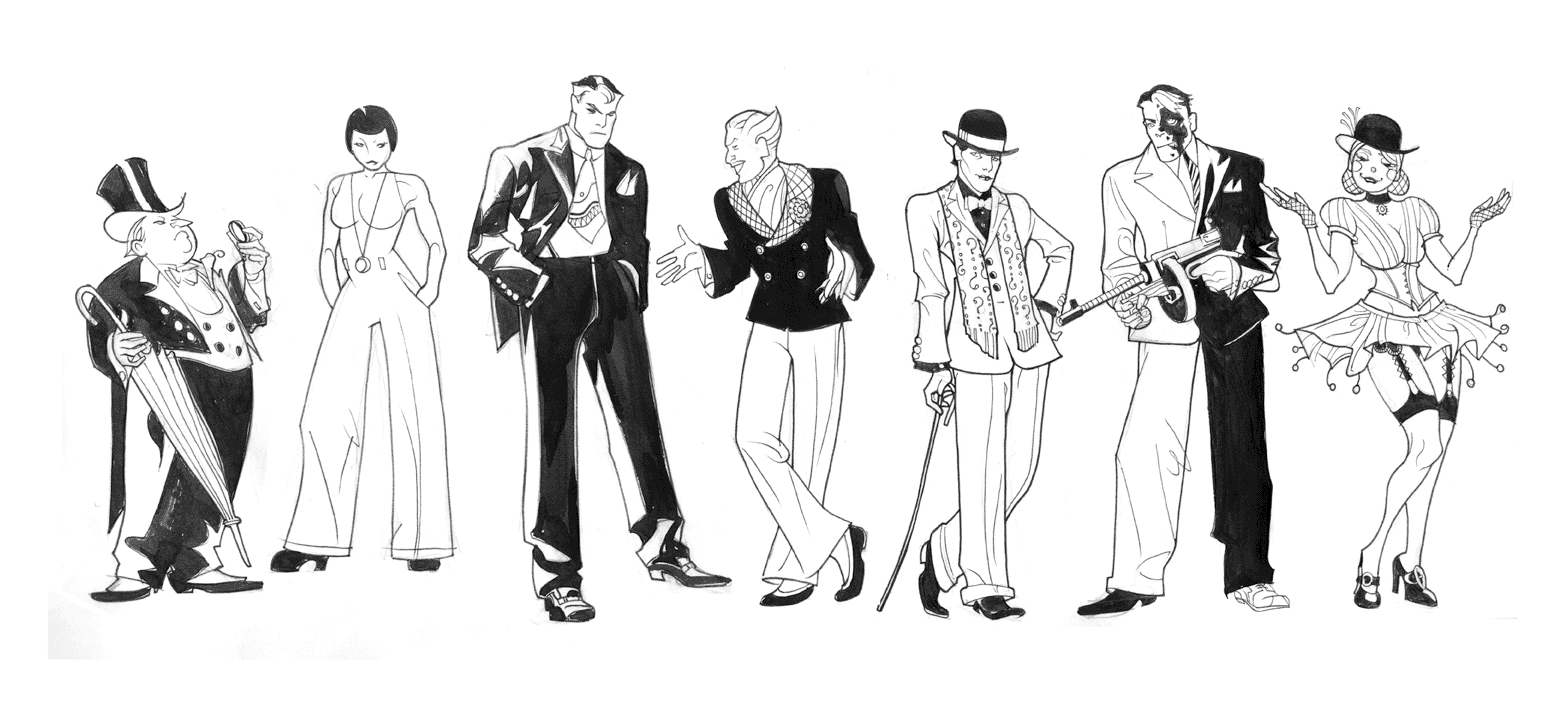
Roaring Personalities: Exploring Iconic 1920s Characters in Literature and Film
The 1920s, often dubbed the “Roaring Twenties,” was a decade of profound social, cultural, and artistic transformation. This era, marked by economic prosperity, technological advancements, and a rebellious spirit, gave rise to a unique breed of characters in literature and film. These 1920s characters, often complex and contradictory, reflected the anxieties, aspirations, and moral ambiguities of the time. From the flamboyant millionaires to the independent flappers, these figures continue to fascinate and inspire, offering a glimpse into a pivotal moment in history.
The Quintessential 1920s Characters: Archetypes of the Era
Several archetypes emerged during the 1920s, each embodying different facets of the decade’s spirit. Understanding these archetypes is crucial for appreciating the nuances of individual 1920s characters.
The Flapper: Emancipation and Rebellion
Perhaps the most recognizable symbol of the 1920s is the flapper. These young women defied traditional Victorian norms by embracing shorter hairstyles, wearing revealing clothing, and engaging in activities previously considered inappropriate for women, such as smoking, drinking, and dancing to jazz music. The flapper represented a new sense of female independence and a rejection of societal constraints. They were bold, independent, and unapologetically themselves. Many 1920s characters in literature and film embody the flapper ideal.
The Jazz Age Millionaire: Wealth, Excess, and Disillusionment
The economic boom of the 1920s created a class of newly wealthy individuals who indulged in extravagant lifestyles. These “Jazz Age millionaires” often hosted lavish parties, drove expensive cars, and surrounded themselves with luxury. However, beneath the surface of opulence, many of these characters harbored feelings of emptiness and disillusionment. The pursuit of wealth often came at the expense of genuine human connection and moral integrity. The figure of the Jazz Age Millionaire is central to understanding many 1920s characters and their motivations.
The Lost Generation Intellectual: Disenchantment and Artistic Expression
The trauma of World War I left a generation of young intellectuals feeling disillusioned and alienated. These “Lost Generation” writers and artists sought solace in artistic expression, often exploring themes of loss, disillusionment, and the search for meaning in a chaotic world. Many of these individuals are central to understanding the intellectual landscape of the 1920s. Their disillusionment shaped the portrayal of various 1920s characters in literature.
The Bootlegger: Prohibition and the Criminal Underworld
The Prohibition era, which banned the sale and manufacture of alcohol, created a thriving black market for illegal liquor. Bootleggers, who smuggled and sold alcohol, became prominent figures in the criminal underworld. These characters often embodied a sense of danger and moral ambiguity. They represent the dark underbelly of the Roaring Twenties, a world of corruption and violence that existed beneath the veneer of prosperity. Films and novels about the era frequently feature these 1920s characters.
Iconic 1920s Characters in Literature: A Closer Look
Several literary works from the 1920s feature unforgettable characters that embody the spirit of the era.
Jay Gatsby (The Great Gatsby by F. Scott Fitzgerald): The American Dream and its Discontents
Jay Gatsby is arguably the most iconic 1920s character in American literature. A self-made millionaire, Gatsby throws lavish parties in the hopes of attracting the attention of his former love, Daisy Buchanan. Gatsby represents the allure and the ultimate emptiness of the American Dream. His relentless pursuit of wealth and status ultimately leads to his tragic downfall. He perfectly encapsulates the complexities of the era, showcasing both the promise and the perils of ambition. [See also: The Symbolism of Green Light in The Great Gatsby]
Daisy Buchanan (The Great Gatsby by F. Scott Fitzgerald): The Allure of Wealth and the Illusion of Happiness
Daisy Buchanan, Gatsby’s object of affection, represents the allure of wealth and the superficiality of the upper class. She is beautiful, charming, and seemingly carefree, but beneath the surface lies a deep sense of dissatisfaction. Daisy is unable to escape the constraints of her social position and ultimately chooses security over true love. Her character highlights the limitations placed on women during the 1920s and the corrosive effects of wealth and privilege. She is a key figure in understanding the social dynamics that shaped 1920s characters.
Nick Carraway (The Great Gatsby by F. Scott Fitzgerald): The Observer of a Decadent Era
Nick Carraway, the narrator of The Great Gatsby, provides an outsider’s perspective on the excesses and moral decay of the Jazz Age. He is initially drawn to the glamour and excitement of Gatsby’s world, but he eventually becomes disillusioned by the superficiality and corruption he witnesses. Nick serves as a moral compass, offering a critical commentary on the values of the 1920s. He is a vital character in understanding the social and moral landscape that defined many 1920s characters.
Jordan Baker (The Great Gatsby by F. Scott Fitzgerald): The New Woman and the Price of Freedom
Jordan Baker, a professional golfer, represents the “New Woman” of the 1920s. She is independent, athletic, and unapologetically ambitious. However, she is also dishonest and cynical, reflecting the moral compromises that many women made in their pursuit of freedom and success. Jordan’s character showcases the complexities of female emancipation during the era. She is one of the most compelling 1920s characters.
Dorothy Shaw and Lorelei Lee (Gentlemen Prefer Blondes by Anita Loos): Gold Diggers and Social Commentary
These two characters, made famous by the novel and subsequent film adaptations, offer a satirical look at the pursuit of wealth and marriage in the 1920s. Lorelei Lee, a blonde bombshell, is unapologetically materialistic and uses her charms to attract wealthy men. Dorothy Shaw, her more pragmatic friend, provides a contrasting perspective. Together, they represent the conflicting values and social pressures of the era. These 1920s characters provide a humorous but insightful commentary on the social mores of the time. [See also: The Evolution of the Female Protagonist in 20th Century Literature]
Iconic 1920s Characters in Film: Bringing the Roaring Twenties to Life
The silent film era and the early years of talkies produced a wealth of memorable 1920s characters.
Charlie Chaplin’s The Tramp: The Little Guy Surviving in a Modern World
While not explicitly set in the 1920s, Chaplin’s iconic Tramp character resonated with audiences during this era. The Tramp represented the struggles of the common man in a rapidly changing world. His resilience, humor, and optimistic spirit made him a beloved figure. He represents the anxieties and hopes of a generation grappling with modernization. Although a general character, he captures the spirit of many 1920s characters.
Clara Bow: The “It” Girl and the Embodiment of Flapper Culture
Clara Bow, known as the “It” Girl, epitomized the flapper ideal. Her youthful energy, rebellious spirit, and undeniable sex appeal made her a Hollywood sensation. She starred in numerous films that celebrated the freedom and exuberance of the 1920s. Bow is synonymous with the image of the 1920s characters that defined the era.
Louise Brooks: The Sophisticated Flapper and a Symbol of Rebellion
Louise Brooks, another iconic flapper actress, was known for her bobbed hairstyle and her independent spirit. She starred in several films that challenged social norms and explored complex themes. Brooks became a symbol of female empowerment and a rejection of conventional expectations. She embodies the intelligent and rebellious spirit found in many 1920s characters.
Lon Chaney: The Man of a Thousand Faces and the Dark Side of the Roaring Twenties
Lon Chaney, a master of disguise, portrayed a variety of grotesque and tragic characters in silent films. His performances often explored the darker aspects of human nature and the hidden anxieties of the 1920s. Chaney represents the anxieties and darker side of the decade, contrasting with the flapper image. His work provides a counterpoint to the more glamorous 1920s characters.
The Enduring Legacy of 1920s Characters
The 1920s characters in literature and film continue to resonate with audiences today because they embody timeless themes of love, loss, ambition, and disillusionment. They offer a window into a pivotal moment in history, a time of great social and cultural change. By studying these characters, we can gain a deeper understanding of the complexities of the human condition and the enduring power of storytelling. The era continues to inspire writers and filmmakers, ensuring that these iconic figures will continue to captivate and inspire generations to come. Examining these 1920s characters allows us to reflect on our own values and aspirations in the modern world. They remain relevant because they explore universal human experiences within a specific historical context.
The allure of the Roaring Twenties, with its vibrant culture and complex characters, remains strong. The 1920s characters presented in literature and film provide valuable insights into a transformative era, offering a nuanced perspective on themes that continue to resonate today. These characters, with their flaws and strengths, their hopes and fears, serve as a reminder of the enduring power of storytelling to illuminate the human experience. Their stories continue to be retold and reinterpreted, ensuring their place in popular culture for years to come. Understanding these 1920s characters is key to understanding the decade itself, and their continued presence in modern media highlights their lasting impact. From the flapper to the millionaire, each character offers a unique perspective on a fascinating era.

